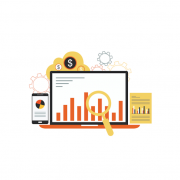Data-driven culture in banking
Banks collect and process vast amounts of data, yet few approach it as if it were the most valuable of their assets! In fact, it is fair to say that when it comes to extracting relevant and useful business insights from their data, financial institutions are not maximizing their value.
According to Capgemini’s “For Successful Banking Transformation, It’s All About Data”report, more than 75% of bank executives believe that manual processes, duplicated data, and outdated systems slow down data processing. Not surprisingly, only 26% of banks can get the right level of value from their customer data. I believe this is not due to their lack of knowledge, but a lack of appropriate IT technology.
The new challenges of the ’new normal’
The reality of the pandemic is creating new rules for how banks interact with the customer. With the rise of digital interactions and remote contact, it is increasingly important that data and technology have a positive impact on the bank’s value growth. It is also important to remember that bad news travels faster than good news, and negative customer experiences have a much stronger impact than positive ones.
In data-driven culture, a better understanding of the consumer is enabled by hyper-personalization. This, however, requires collecting and processing additional, detailed customer data, which increases the risks associated with integrating and managing them. How do you harness information to maximize financial data use while keeping it in check?
The authors of the Capgemini report suggest several directions of progress in digital transformation, three of which seem particularly noteworthy to me. The first is democratizing access to business data, the second: moving to Event-Driven Architecture, and third: using data to power operational processes and workflows.
Open data as a condition for data-driven growth
Data is the most foundational component of any modern business application or function. Over the past two years, several global banks have already established “data democratization” programs. The corporate data flow has been made available to the entire organization through secure and controlled access.
Banks that continue to restrain data flow at the business division or department level are unlikely to succeed in digital transformation. Democratized access to data makes it consistent and easy to understand, and its management process measurable. Open data provides the opportunity to better automate the KYC process and reduce the customer onboarding process from weeks to just a day, or near real-time.
Real-time: the holy grail of ‘modern’ banking
Another forward-looking perspective for banks suggested by Capgemini is the move to Event-Driven Architecture (EDA). This move provides a significant return on investment since it streamlines communication between hundreds of banking applications. EDA enables a real-time view of the results or effects of business events, more easily integrating external data sources – including unconventional ones – and creating faster and simpler business processes.
With EDA, not only banks, but the entire financial services industry can target customers for marketing purposes and observe their moods and insights in real-time. It will make every business process possible not just online, but “here and now,” maximizing retention of existing customers and attracting new ones.
Data fuels operational processes
Intelligent decision-making also requires the use of higher-level data processing tools, also using AI. This is the only way to connect and not only understand the customers themselves, but also draw appropriate conclusions based on their financial activity. Intelligent use of data on micro and macroeconomic context, business risks, and predicting likely outcomes is not possible without the support of technology.
However, simply having effective and efficient data management solutions available to the bank is not enough. The value of data cannot be harnessed without an effective operating model. It is critical to prioritize and provide a secure environment that stimulates and reduces time to market for new products and services. This approach requires creating and embracing a culture of continuous data-driven innovation in financial institutions of all shapes and sizes.
No data, no banking transformation
While investments in data and analytics platforms are important, this is just the beginning. Banks need to become organizations that are intelligent and agile enough to adapt and respond to the ever-changing business landscape and the expectations of increasingly demanding customers.
A solution that intelligently leverages real-time banking data is our proprietary Payres system. It can be used for advanced reporting purposes or executing a variety of business rules that take effect in external systems. With Payres, the data that was previously stored and processed two-dimensionally, are now leveraged multi-dimensionally, creating added value for your bank.
Have you ever thought how your business will harness the dormant potential of data to deliver personalized experiences to your customers? Contact us to discover Payres and the potential of the data you have at your fingertips!

